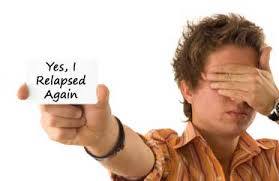Suncoast Moms Group Holds Remembrance For Those Lost To Overdose Deaths,
Calls for Action August
31st for International Overdose Awareness Day
Hit hard by first the prescription drug epidemic, and
now the increase in heroin deaths, moms and families in the Suncoast area
will be holding a vigil
to remember their loved ones and send hope to those still struggling.
Approximately seven Floridians lose their lives each day to preventable
accidental overdose, with more than 100 lives lost each day nationwide. #NotOneMore has come to
mean every life is worth saving to these Florida
An International Overdose Awareness Day VIGIL for Remembrance,
Action and Hope will be held Sunday, August 31 at 7:00pm starting with dinner on
your own at Ricaltini's Bar and Grille, 1997 Kentucky Ave Englewood , Florida
“If the loss of this
beautiful boy wasn’t heartache enough, imagine how we felt when we discovered
that there existed a simple antidote which might have saved him the moment I
found him.” said Sarasota mom Jan Spring
Families are calling for the community to
learn more about overdose prevention and naloxone, also known as Narcan, a
prescription medication that reverses opiate overdose. “Now is the time to
acknowledge the lives lost to overdose, and in their name make naloxone
available,” stated Julia Negron, organizer of the Suncoast Harm Reduction
Project and mother of a son whose life has been affected by addictive illness
and incarceration.
“There are too many roadblocks to recovery now; there’s no
rehab if you’re dead.” Advocacy groups have been popping up in
response to the rise in heroin overdoses populated by mothers who have lost
loved ones, treatment professionals, and public health advocates.
Demonstrations show how easy it is to use the currently available nasal naloxone
spray and save a life. “About an hour of training and any family member,
caretaker or friend of someone at risk can feel comfortable having this
medication and using it in an emergency,” states Negron, who is a trainer and
prescribed to carry naloxone. “Half of all overdoses happen at home. It’s
heartbreaking to work with mothers who’ve lost kids and realize intervention
with naloxone could have saved them, but I applaud their courage in standing up
and demanding to help save others.”
Fatal drug overdose has increased more
than six-fold in the past three decades, and now claims the lives of over 36,000
Americans every year. Access to naloxone for families, caretakers, seniors and
drug users is often limited by laws that pre-date the overdose epidemic. In an
effort to reduce overdose mortality, 24 states have recently amended laws to
increase access to naloxone in the community. Some studies show that increasing
access to naloxone to laypeople can reduce the overdose mortality in the
community by as much as fifty percent. The moms of the Suncoast Harm Reduction
Project have been meeting with Florida
"We have been blessed to get broad support
from other Florida
The Suncoast Harm
Reduction Project is an outreach project of the non-profit advocacy organization
A New PATH (Parents For Addiction Treatment and Healing) This event is the
result of a coalition effort of the advocacy groups Suncoast Harm Reduction
Project, GRASP, Broken No More, A New PATH, Brandi's Wish, Floridians For
Recovery, United We CAN, The Addict's Mom, The Skeeterhawk Experiment and Moms
United to End The War On Drugs.



